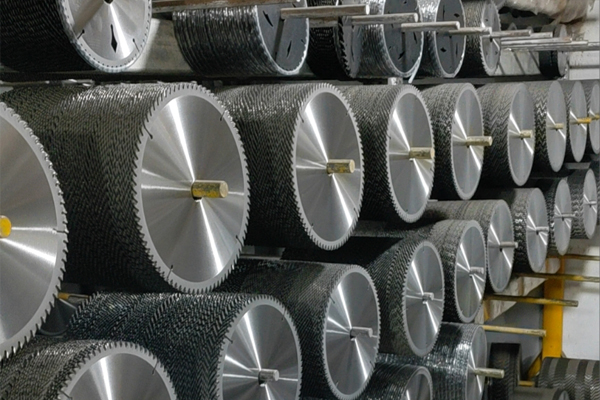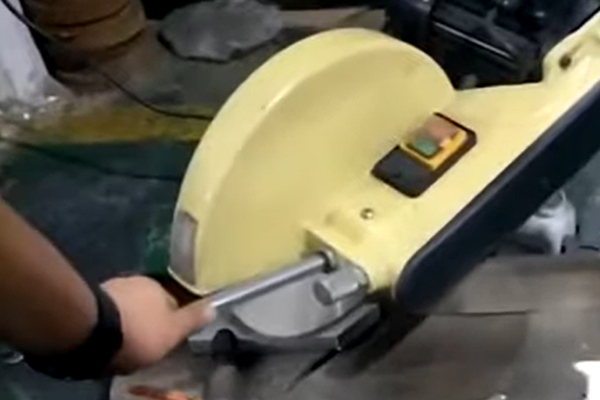
Ever wondered if your trusty wood blade could handle aluminum? You’re not alone. It’s a common question that pops up when someone needs to get a quick job done without changing blades. Let’s dive in and see what works, and what might be a recipe for trouble.
Yes, you can cut aluminum with a wood blade if it’s carbide-tipped and has a high tooth count. Ensure the material is securely clamped, reduce cutting speed, use lubrication, and wear proper safety gear to minimize heat and vibrations for a safe, effective cut. A wood blade with a high tooth count can do the job, but you need to take precautions like reducing feed speed, securing the workpiece properly, and using appropriate personal protective equipment. It’s all about controlling the heat and vibration.
So, can you really cut aluminum safely with a wood blade? Let’s break it down further.
Is it Ok to Cut Aluminum with a Miter Saw?
Cutting aluminum with a miter saw is possible, but you need to know how to do it properly to avoid accidents.
Using a wood blade on aluminum is acceptable if it has a high tooth count, and you’re cautious. Make sure the aluminum is clamped securely to prevent any movement, which can be dangerous. Use slower speeds, wear safety gear, and watch for any signs of overheating. Remember, a carbide-tipped blade is ideal.

When I first tried cutting aluminum with a miter saw, I was honestly a bit nervous. I made sure the aluminum piece was well-clamped and, trust me, I took my time with each cut. It wasn’t as smooth as slicing through wood, but it got the job done. Here’s the trick—go slow, stay steady, and always be cautious. Aluminum likes to vibrate, and you want to keep everything as stable as possible. If you can, use a lubricant1—it helps with reducing friction and heat. If the blade starts grabbing, that’s a sign to back off and maybe reconsider the setup.
Key Factors When Cutting Aluminum with a Miter Saw
- Blade Selection: Use a carbide-tipped blade with at least 60 teeth.
- Clamp Securely: Aluminum can kick back or vibrate if not held steady.
- Speed Control: Slow down your feed speed; avoid forcing the material.
- Lubrication: A bit of WD-40 or cutting fluid goes a long way in ensuring a clean cut.
Cutting Aluminum on a Table Saw?
Cutting aluminum on a table saw is doable but requires careful setup.
A wood blade can be used on a table saw to cut aluminum, but it must be carbide-tipped and sharp. Lower the blade height slightly, go slow, and always wear safety glasses to prevent any flying chips. Be mindful of blade speed and ensure the aluminum is supported properly.
The first time I used a table saw for aluminum, I made sure to adjust my expectations. Unlike wood, aluminum doesn’t slice easily; it fights back a little. The biggest takeaway for me? Patience. Lower the blade a little, use a push stick, and go steady—you’ll thank yourself later when you avoid nicks in the material or even worse, a damaged blade2. Oh, and keep those fingers far from the action—aluminum chips are sharp!
Tips for Success When Using a Table Saw
- Blade Sharpness: A sharp blade ensures less friction and smoother cuts.
- Support Matters: Use feather boards or guides to maintain stability.
- Slow and Steady: Don’t rush; aluminum heats up quickly, leading to possible burns or blade damage.
Is it Safe to Cut Aluminum with Any Saw?
Not all saws are suitable for cutting aluminum.
Safety is key when selecting a saw for aluminum. Stick to saws designed for metal or multipurpose cutting to avoid accidents. Circular saws with carbide blades can be effective if used with caution. Avoid band saws unless you have a specific metal blade designed for softer metals.

From my experience, safety is all about knowing your limits. Using the right tool for the job saves not just time, but also potential injury. I’ve seen people try to use band saws meant for wood to cut metal, and it just ends in frustration—or worse, a ruined blade. Aluminum demands respect; it’s not impossible to work with, but it’s less forgiving than wood. Invest in a decent carbide blade3, or better yet, get one designed for non-ferrous metals if you’re planning to do this often.
What is the Best Way to Cut Aluminum with an Electric Saw?
The best method depends on the tools available and the finish you want.
For cutting aluminum with an electric saw, a carbide-tipped blade is your best bet. Slow your cutting speed and consider using a cutting lubricant to reduce friction. Always ensure proper clamping and personal protection. For a clean, burr-free finish, look into using a blade specifically designed for non-ferrous metals4.
When I had a lot of aluminum cuts to make, I switched to a blade specifically meant for non-ferrous metals—it was a game changer. Suddenly, what had felt like pushing through metal butter became much more manageable, like slicing through cardboard. If you’re doing this often, it’s worth the investment. Remember, aluminum likes to grab, so reducing friction with a lubricant helps a lot.
Why Specialized Blades Make a Difference
- Tooth Design: Blades for non-ferrous metals have a different tooth geometry that reduces grabbing.
- Friction Control: Less heat means less risk of blade warping or aluminum chips sticking to the blade.
- Cut Quality: A smoother finish with fewer burrs.
What are Your Tips for Cutting Aluminum?
There are a few key tips to keep in mind for a successful aluminum cut.
Cutting aluminum requires proper preparation: use a sharp, carbide blade, secure the material well, cut slowly, and use lubrication. Following these steps helps prevent dangerous kickback, overheating, or damage to your blade and the material.
My biggest tip? Take your time. Rushing is the enemy when it comes to cutting aluminum. Clamping the material securely prevents any movement that could end in a jagged edge or even a dangerous kickback5. Also, keep the blade sharp. I can’t tell you how much easier a fresh blade makes things—it’s like night and day. Lastly, never underestimate the value of a little lubrication; it keeps the cut clean and prevents the blade from getting gummed up.
Quick Tips Checklist for Cutting Aluminum
| Dica | Why It Matters |
|---|---|
| Use a Carbide Blade | Reduces grabbing and ensures a cleaner cut. |
| Clamp Securely | Prevents material movement and accidents. |
| Use Lubrication | Lowers friction, minimizes heat buildup. |
| Cut Slowly | Reduces risk of overheating or kickback. |
Conclusão
Cutting aluminum with a wood blade can be done safely with the right precautions. Remember, it’s all about preparation, patience, and using the proper tools.
-
Lubricants play a critical role in reducing friction and preventing heat buildup when cutting aluminum. ↩
-
A damaged blade can lead to poor cuts and safety hazards, and improper techniques or unsuitable blades can harm their tools, emphasizing the importance of correct usage. ↩
-
Carbide blades supply durability and precision, particularly when cutting non-ferrous metals like aluminium. ↩
-
Specific blade types are designed for cutting non-ferrous metals, which can optimize their cutting efficiency and safety. ↩
-
Kickback is a critical safety concern. Learn the risks and precautions associated with kickback. ↩